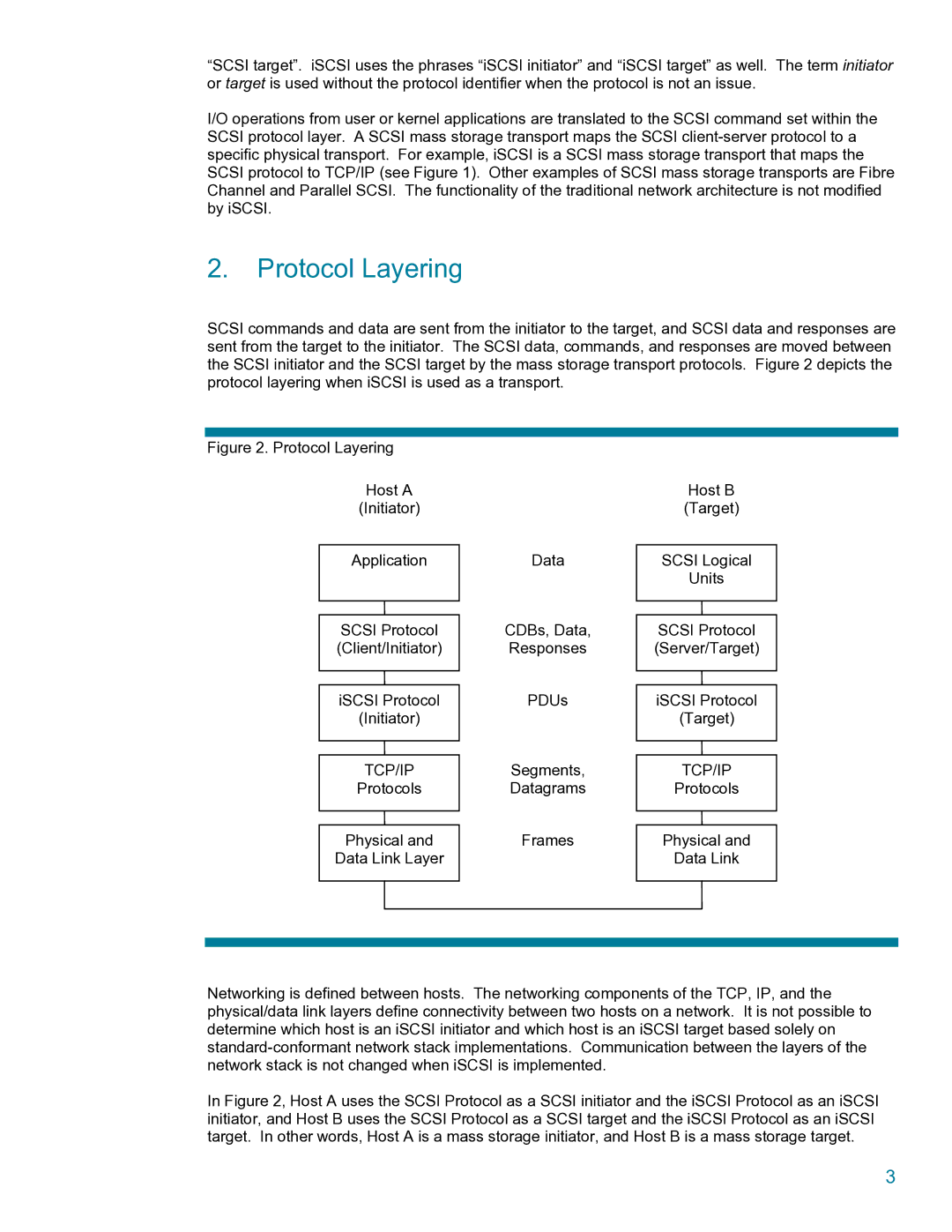
“SCSI target”. iSCSI uses the phrases “iSCSI initiator” and “iSCSI target” as well. The term initiator or target is used without the protocol identifier when the protocol is not an issue.
I/O operations from user or kernel applications are translated to the SCSI command set within the SCSI protocol layer. A SCSI mass storage transport maps the SCSI
2.Protocol Layering
SCSI commands and data are sent from the initiator to the target, and SCSI data and responses are sent from the target to the initiator. The SCSI data, commands, and responses are moved between the SCSI initiator and the SCSI target by the mass storage transport protocols. Figure 2 depicts the protocol layering when iSCSI is used as a transport.
Figure 2. Protocol Layering
Host A
(Initiator)
Application
SCSI Protocol (Client/Initiator)
iSCSI Protocol
(Initiator)
TCP/IP
Protocols
Physical and
Data Link Layer
Data
CDBs, Data, Responses
PDUs
Segments, Datagrams
Frames
Host B
(Target)
SCSI Logical
Units
SCSI Protocol (Server/Target)
iSCSI Protocol
(Target)
TCP/IP
Protocols
Physical and
Data Link
Networking is defined between hosts. The networking components of the TCP, IP, and the physical/data link layers define connectivity between two hosts on a network. It is not possible to determine which host is an iSCSI initiator and which host is an iSCSI target based solely on
In Figure 2, Host A uses the SCSI Protocol as a SCSI initiator and the iSCSI Protocol as an iSCSI initiator, and Host B uses the SCSI Protocol as a SCSI target and the iSCSI Protocol as an iSCSI target. In other words, Host A is a mass storage initiator, and Host B is a mass storage target.
3
